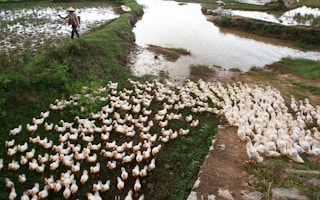In the face of changing weather driven by climate change and the increasing demand for food, conservation agriculture (CA) aims to achieve sustainable and profitable agriculture and improve farmers’ livelihoods.
Here are five things you need to know:
1. CA observes three main principles that you should remember
- Direct seeding involves growing crops without mechanical seedbed preparation and with minimal soil disturbance since the harvest of the previous crop.
- A permanent soil cover is important to: protect the soil against the deleterious effects of exposure to rain and sun; provide the micro and macro organisms in the soil with a constant supply of “food”; and alter the microclimate in the soil for optimal growth and development of soil organisms, including plant roots.
- The rotation of crops is not only necessary to offer a diverse “diet” to the soil micro organisms, but as they root at different soil depths, they are capable of exploring different soil layers for nutrients.
2. CA helps fight climate change
“
One of the most noticeable changes for the farmer is the reduced requirement for farm power and labour. CA helps lower the overall requirement for farm power and energy for field production by up to 60 per cent compared to conventional farming
Only because the effects of climate change are being felt more and more, it does not mean we should give up on efforts to reduce greenhouse gas emissions (GHG). With the increasing soil organic matter, the soils under Conservation Agriculture can retain carbon from carbon dioxide and store it safely for long periods of time.
The consumption of fossil fuel for agricultural production is also significantly reduced under CA and burning of crop residues is completely eliminated, which also contributes to a reduction of GHG release.
3. CA provides small-scale farmers with diversification opportunities
CA has direct impacts which have the potential to turn around the daily and seasonal calendar and in the long term change the rhythm of farmers’ family because of the reduced labour requirements for tillage, land preparation and weeding.
More time availability offers real opportunities for diversification options such as for example poultry farming or on-farm sales of produce, or other off-farm small enterprise developments.
FAO argues that support should be given to smallholders to scale-up production. This support should include legal land tenure, global policies for a level playing field, access to capital and markets, structured training, and investment in technology and infrastructure.
4. CA helps lower farm power and reduces labour
One of the most noticeable changes for the farmer is the reduced requirement for farm power and labour. CA helps lower the overall requirement for farm power and energy for field production by up to 60 per cent compared to conventional farming.
This is due to the fact that the most power intensive operations, such as tillage, are eliminated. Additionally equipment investment, particularly the number and size of tractors, is significantly reduced. This effect applies equally to small-scale farmers using only hand labour or animal traction.
5. Everyone has a role to play
Maintaining the momentum of growth in agricultural productivity will remain crucial in the coming decades as production of basic staple foods needs to increase by 60 per cent if it is to meet expected demand growth.
Food is one of our most basic needs, so be it reducing food loss and waste, eating lower-impact diets or investing in sustainable agriculture such as conservation agriculture - countries, companies, and consumers can make a difference.

















